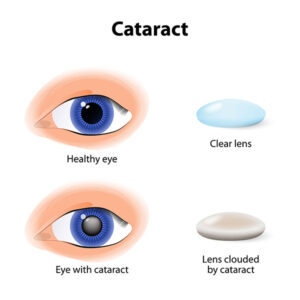
Prevent Blindness America Declares June as Cataract Awareness Month to Educate Public on The Most Common Eye Disease
There are over 24 million US residents 40 years old and older who have cataract, according to the “Vision Problems in the U.S.” report from Prevent Blindness America. It is the top reason for blindness worldwide.
Cataract is often a clouding in the eye’s lens that will disable or change the passage of light into the eye. Unlike numerous eye conditions, however, vision loss because of cataract may be restored. Cataract surgery is one of the most commonly executed procedures in the nation and contains a 95 % rate of success. And, a new study found that cataract surgery patients had a significantly reduced rate of hip bone injuries from falls.
The most common cause of cataracts is aging. This is due to normal eye changes that happen after around age 40. That is when normal proteins in the lens start to break down. But besides aging, other cataract risk factors include:
- Having parents, brothers, sisters, or other family members who have cataracts
- Having certain medical problems, such as diabetes
- Having an eye injury, eye surgery, or radiation treatments on your upper body
- Having spent a lot of time in the sun, especially without sunglasses that protest your eyes from damaging ultraviolet (UV) rays

If you have any of these risk factors for cataracts, you should request an appointment with your eye care provider.
Cataracts usually don’t cause pain, inflammation or tears. Nevertheless, these changes in your vision could possibly be indications of cataracts:
- Fuzzy vision, double vision, phantom images, a feeling of a “film” on the eyes.
- Lighting appears too dimly lit to read or perform close-up work, or you are “dazzled” by strong lighting.
- Altering eyeglass prescriptions frequently. The modification might not exactly seem to help your vision.
You might at times notice the cataract inside your eye. It could possibly look like a milky or yellowish or golden-tinged spot within the pupil (the center of your eye is normally black).
“Although getting a cataract is typical, it doesn’t need to mean long lasting eyesight loss,” said Hugh R. Parry, President and CEO of Prevent Blindness America. “One method in order to protect our vision is to create a commitment to take care of our eyes today, which includes getting a dilated eye exam, so that we can help protect our sight for the future not just from cataract, but other eye diseases as well.”
Click Here to schedule your dilated eye exam today and help prevent eye issues in your future.






